What is Outsider Art?
Outsider Art refers to work by self-taught, unconventional, and sometimes under-recognized artists.
Until the 1980s, the term was synonymous with the French term "Art Brut.
Art Brut refers to works created by untrained artists outside of the academic tradition of fine art.
Although the original meaning of the term is the same, the designation "outsider art" has become more common these days because the art market in the English-speaking world is more expansive than in the French-speaking world.
Outsider artists are considered marginalized from the mainstream of the art industry for various reasons, but many of their works are characterized by a unique appeal that cannot be created by professional artists.
In their production process, they create without fear of unspoken rules or taboos.
As a result, outsider art is often raw, radical, and unconventional.
Museum Reception
In recent years, mainstream interest in outsider art has been growing.
Many museums, such as the Smithsonian Institution's "Between Worlds: The Art of Bill Traylor" and LACMA's "Outliers and American Vanguard Art," have taken notice of this movement, presenting artists and their fascinating and their fascinating stories.
Market demand for works by outsider artists is supported by their historical importance.
In January 2019, a work by artist Henry Darger sold for $684,500 at Christie's. As more cultural institutions shed new light on outsider art, there is a great deal of attention being paid to a movement that has traditionally been overlooked.
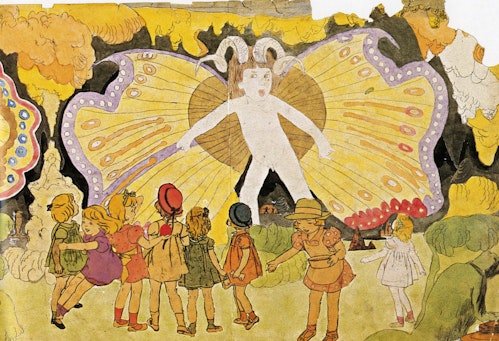
Origins of Outsider Art
The origins and definitions of outsider art vary widely, but the French painter Jean Dubuffet is generally credited as its originator.
In the 1940s, Dubuffet began collecting works of art created in specific contexts, such as those of Heinrich Anton Müller and Aloise Corbaz.
He considered these works more authentic than those of classically trained artists.
In 1949, he coined the term Art Brut to refer to this "raw" or "undefined" art.
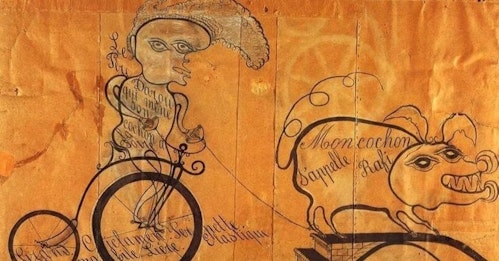
Heinrich Anton Müller, Heinrich Anton Müller
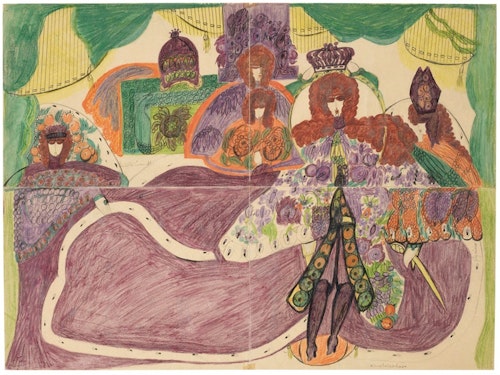
Aloïse Corbaz, Aloïse Corbaz, Aristoloches (double-sided), circa 1925-1933.
The term "outsider art" first appeared in 1972 when art historian Roger Cardinal used it as the English equivalent of the French term Art Brut.
Initially the term referred to art by people with specific disabilities or those on the margins of society, but in the 1980s it was broadened to include a wider range of indigenous art.
Outsider art sometimes overlaps with terms such as "self-taught art" or "contemporary folk art. Among the earliest American artists categorized in this category were, Horace Pippin and William Edmondson and John Kane and others.
Notable Outsider Artists
1) "Adolph Wölfli," who painted miniatures while suffering from hallucinations
Adolph Wölfli was born in Bern, Switzerland, in 1864.
He came from a poor family, with a drunken father and sickly mother. He was soon sent to a foster home, where he spent an unimaginably difficult childhood, moving from foster home to foster home, working as a child laborer, and even being chastised.
Growing up, it was difficult to get rid of her mental instability, and she committed several crimes while also having trouble finding love.
At the age of 31, he was diagnosed with schizophrenia before being committed to a mental hospital. Later, given a pencil and newspaper, Wölfli suddenly began to draw.
Over the next 30 years, until his death, he continued to draw in a room in the psychiatric ward, producing a total of 25,000 pages of work that became five "books" or drawings, now in the care of the Adolphe Wölfli Foundation.
Wölfli left behind a lengthy pictorial and verbal narrative that realizes unique spaces, colors, and worldviews that no one else in the world could have imagined, and continues to inspire artists and expressionists in particular.
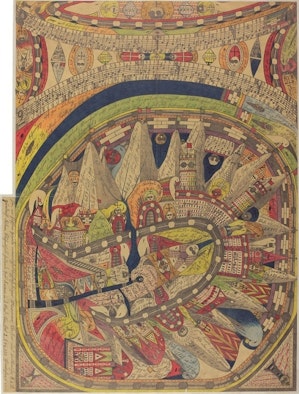
From the Cradle to the Grave, 1908 - 1912.
(2) "Henry Darger," a recluse for 40 years, continued to create imaginary stories.
Henry Darger painted the story of the Vivian Girls, seven girls on their way to war, without showing it to anyone for the rest of his life.
Unable to fit in with society as a child, she entered an institution for the disabled, and later worked for decades as a janitor at a church, a humble job, while staying at home to create on the side.
Over a period of about 40 years, he created an epic story spanning 15,000 pages.
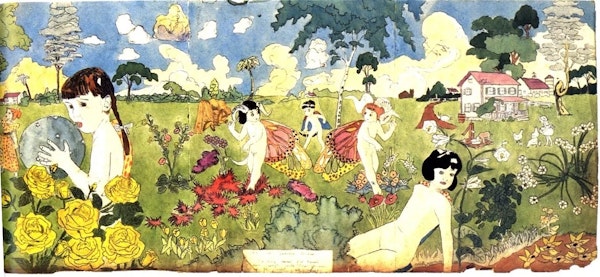
(3) "Carl Juncker," a dreamy architect who continued to create strange, dreamlike houses throughout his life.
Carl Juncker is known for the "Juncker House" on the outskirts of the western German city of Lemgo.
He spent more than 20 years from 1889 onward in the total design of this house, from the facade to the furniture, from corner to corner, creating a house that stimulated a unique sense of form that was once even derided as a "haunted house" or "bizarre architecture.
The wood-carved caverns of the Junkerhaus are lined with countless twigs and spike-like elements that seem to generate a unique organic interior itself, a physical sensation that seems to enter the artist's own neural net.
He is now considered "Lemgo's little Gaudi" and "the pioneer of expressionist architecture.
Junker was actually orphaned at an early age after losing his parents and siblings to tuberculosis, and grew up under the shelter of his grandfather. Although he never had a family of his own, Junker House has a couple's bedroom, a children's room, and even a cradle by the south window. In reality, these rooms were never used even for a single night. It is a room where the longing for familial love comes to life.
Considering the fact that the artist was aware that this was a dream that would never come true in his life, and yet he was still working diligently with his carving knife and paintbrush, one can feel the passion of a human being who would want to say that this is what art is all about.
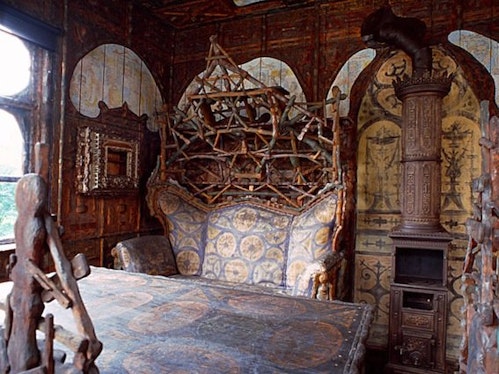
4) "John Kane," a painter of Scottish folk art
Born in Scotland and immigrated to the United States. He became known for his landscapes of Pittsburgh, Pennsylvania and Scotland.
Kane grew up under economic constraints and experienced many trades throughout his life, including road paver, house painter, and carpenter.
At the age of 31, he lost his leg in an unfortunate accident and was unable to find a good job. This unfortunate accident, however, inspired Kane to take up painting.
Kane repeatedly applied to art schools but could not afford the tuition.
Kane's painting skills were self-taught.
In 1927, his "Scene from the Scottish Highlands" was selected for the Carnegie International Exhibition in Pittsburgh, and his work was finally seen by a wider public.
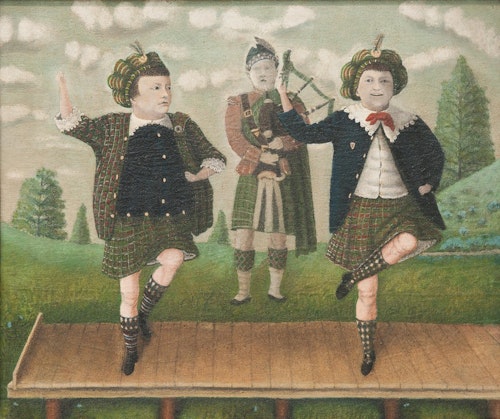
John Cane, Scene from the Scottish Highlands | c. 1927
(5) "Morris Hirschfield" depicts animals in dense detail
Hirshfield ran a successful company that manufactured ladies' coats and suits.
He also owned a company that manufactured bedroom slippers. In his spare time, he created artwork, which was admired by gallerist Sidney Janis, who was accustomed to self-taught artists.
Janis selected Hirshfield for the exhibition "Contemporary Unknown American Painters" at MoMA's "Members Room" in 1939.
She also featured Hirshfield in her book, They Taught Themselves.
Hirschfield became the first self-taught artist to receive a comprehensive retrospective at the Museum of Modern Art (MoMA). His canvases are filled to the brim with intricate patterns of animal and female motifs.
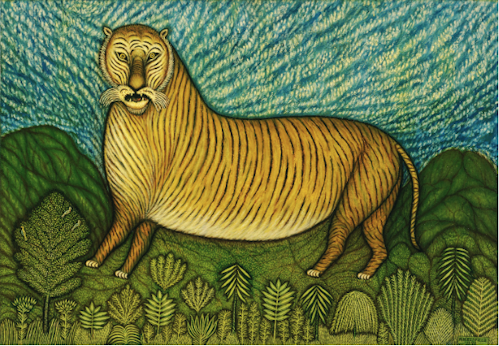
Morris Hirshfield, Tiger, 1940
(6) "William Edmondson" creates cute, minimalist sculptures.
African-American folk art sculptor William Edmondson was the first artist to have a solo exhibition at MoMA in 1937.
Edmondson was highly motivated to work and began working at the age of 16 without higher education.
After retiring from his place of employment, he received a divine vision, which inspired him to begin sculpting. With little money to purchase raw materials, his sculptures were made with unconventional mediums, such as discarded limestone blocks and chisels made from railroad spikes.
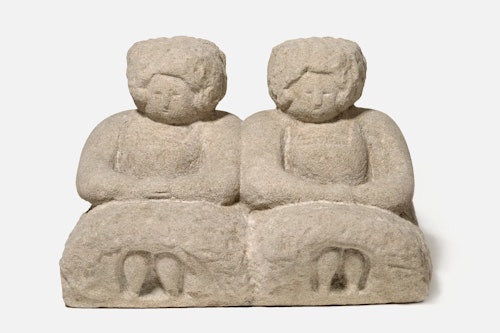
William Edmondson, Martha and Mary
(7) "Horace Pippin" depicts the African American spirit
American folk painter Horace Pippin is largely regarded as the greatest African American painter of his time. Pippin's work was not discovered until 1937, just nine years before his death, and is known for its depiction of African American life and the horrors of war. As a child, he painted biblical scenes on frayed muslin and later worked as an ironworker, junk dealer, and porter before eventually serving in World War I. While his early works were characterized by heavy impasto and limited color, his later works use bolder colors.
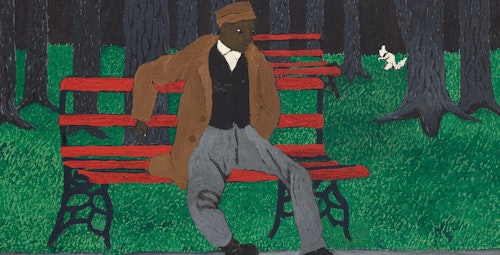
Horace Pippin, The Park Bench, 1946.
TRiCERA ART Three recommended outsider artworks

Girl (Going over Bonnard)
by by Kazumasa Sugasawa
W 45.50cm x H 53.00cm / ¥80,000
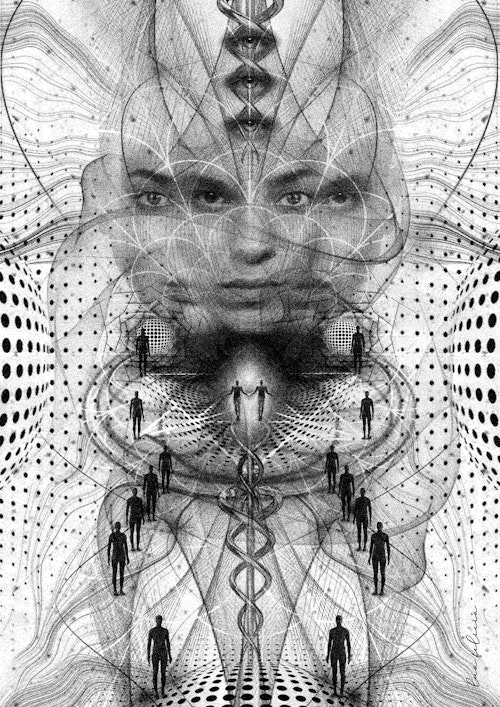
Genus
by Lua Felicia
W 29.70cm x H 42.00cm / ¥37,000

INCIDENTS
by Taro Karibe
W 42.00cm x H 56.00cm / ¥97,500
See the latest works by TRiCERA ART
TRiCERA ART members enjoy a variety of privileges and preferences.
- Discounts such as members-only secret sales and coupons
- Create your own collection by registering your favorite artists
- Receive updates on popular artists, exhibitions, and events
- Receive a weekly newsletter with selected art
- Personal Assessment to find out what kind of art you like.
Please register for free to receive the latest information.
Free Membership Registration
For TRiCERA inquiries, please contact us here
If you have any questions about TRiCERA, or if you have any requests for the kind of artwork you are looking for, please feel free to contact us through our official LINE.